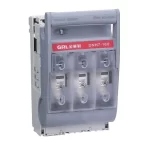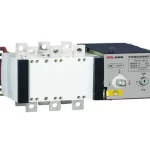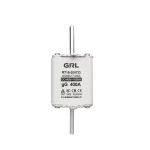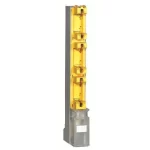In electronics and electrical engineering, a fuse is an electrical safety device that operates to provide overcurrent protection of an electrical circuit. Its essential component is a metal wire or strip that melts when too much current flows through it, thereby stopping or interrupting the current. It is a sacrificial device; once a fuse has operated it is an open circuit, and must be replaced or rewired, depending on its type.
Fuses have been used as essential safety devices from the early days of electrical engineering. Today there are thousands of different fuse designs which have specific current and voltage ratings, breaking capacity, and response times, depending on the application. The time and current operating characteristics of fuses are chosen to provide adequate protection without needless interruption. Wiring regulations usually define a maximum fuse current rating for particular circuits. Short circuits, overloading, mismatched loads, or device failure are the prime or some of the reasons for fuse operation. When a damaged live wire makes contact with a metal case that is connected to ground, a short circuit will form and the fuse will blow.
Related News
- China Is The Largest Market Of Smart Phone Uses
- 2021 SNEC Shaping The Future Of Energy
- Disconnector Switch Global Market Analysis
- China Post Opens Milk Tea Shops
- Fuse Link
- WTO: G20 Economies Are Gradually Withdrawing Some Measures Against COVID.
- Fuse Switch Disconenctor And Fuse Link
- 2020 Olympic Games Has Opened On 23rd Jul.2021
- Difference Between Fuse And Circuit Breaker
- Advantages And Disadvantages Of Fuses And Switches







